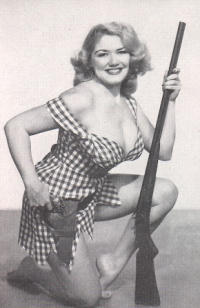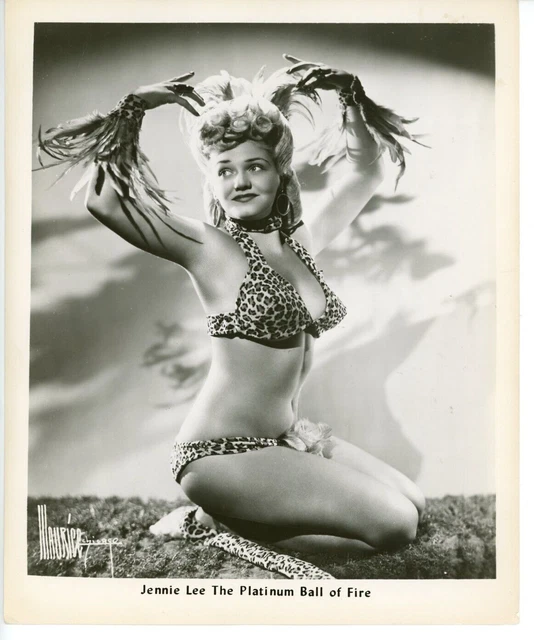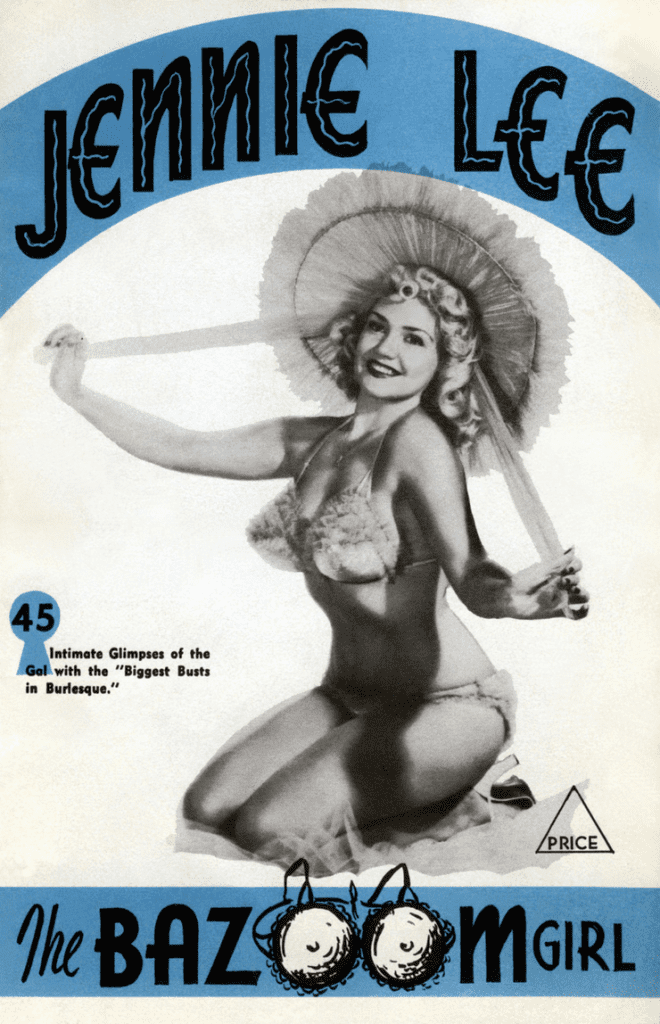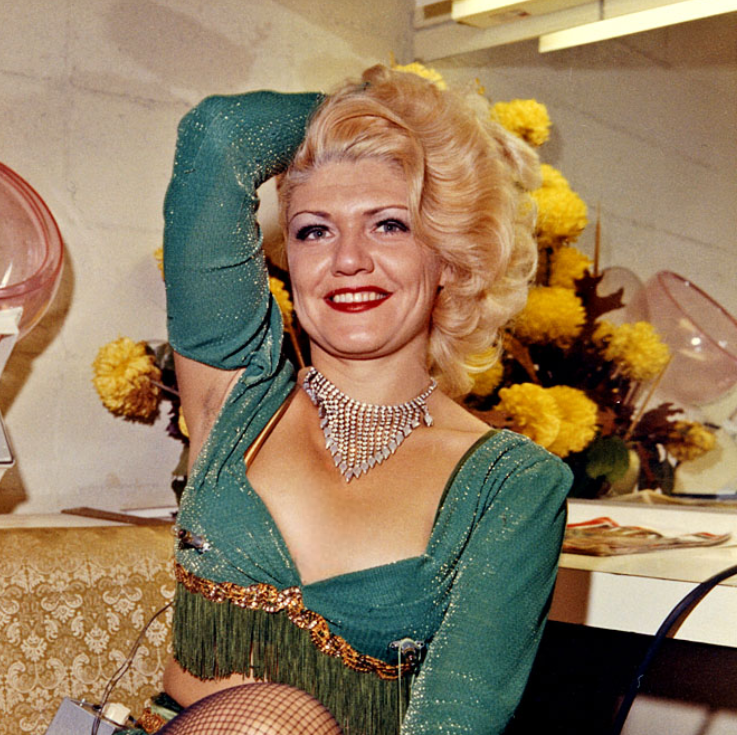The Woman Who Turned Tassels Into Triumphs
Ever wonder what makes a legend? It’s not just fame or beauty—it’s the fire behind the glitter, the courage beneath the curve. In the golden glow of mid-century America, one woman stood at the heart of it all: Jennie Lee, known on stage as “Miss 44 and Plenty More.” She wasn’t only a dancer who could make an audience lose its breath—she was a fighter who built a movement for women who lived beneath the spotlight. Her tassels spun like lightning, but her legacy spun far deeper—into union halls, history books, and the very soul of burlesque.

From Small-Town Girl to Stage Sensation
Jennie Lee’s story began as Virginia Lee Hicks, born October 23, 1928, in Kansas City, Missouri. Her childhood danced between jazz rhythms and Depression-era struggle, a world where music filled the cracks of hard times. From the start, she had rhythm in her bones and rebellion in her blood. By eighteen, she traded her small-town name for a stage one that purred with confidence—Jennie Lee.
She wasn’t born under the lights, but she chased them. From Chicago lounges to Los Angeles cabarets, she honed her craft with fearless precision. At barely five-foot-two, Jennie could command a room of hundreds. She wasn’t the tallest on the stage, but when she moved, she made everyone else look small.
Video : Jazz Age: The High Hatters – Sweet Jennie Lee, 1930
The Rise of “Miss 44 and Plenty More”
When Jennie Lee hit her stride in the early 1950s, burlesque was booming. Crowds wanted showmanship, not scandal—and Jennie delivered both art and electricity. Her curves became legend, earning her that playful title, “Miss 44 and Plenty More.” But what really made her unforgettable wasn’t her measurements—it was her mastery. Her trademark tassel-twirl was fast, fierce, and hypnotic. She could spin each tassel in opposite directions, defying gravity with a grin.

Her shows packed venues from Vegas to New York. Every performance was a mix of comedy, charm, and controlled chaos. Jennie didn’t just undress; she unleashed. Each movement told a story—of freedom, laughter, and power. And while the crowd saw glamour, behind the curtains was a performer obsessed with perfection: hand-sewing costumes, rehearsing till dawn, and rewriting routines until they shimmered with magic.
Queen of the Spin: Crafting a Signature Move
The “Propeller Spin.” That’s what audiences called it. Jennie’s tassels didn’t just twirl; they whirled like jet engines. The technique required total muscle control—every rotation a mix of discipline and play. It became her trademark, a mix of athleticism and artistry that turned burlesque into performance sport.

She once joked, “You can’t fake rhythm—either you’ve got it, or the tassels tell on you.” Her humor set her apart. Where others flirted, she engaged. Her act was less about temptation and more about invitation—a dance that said, “Come laugh with me, not just look at me.”
The Activist Behind the Glamour
Here’s where Jennie Lee broke every mold. While others rested between shows, she organized. She’d seen too many performers underpaid, overworked, and disrespected. So in 1955, she founded The Exotic Dancers League, a union-style organization that fought for fair wages, safety, and dignity. “We’re artists, not ornaments,” she declared.

Her leadership transformed burlesque from a lonely hustle into a sisterhood. She built bowling teams, fundraisers, and community bonds that gave dancers a voice. Decades before the phrase “women’s empowerment” trended, Jennie was already living it. She proved that sequins and solidarity could share the same stage.
Hollywood Dreams and Heartfelt Realities
Like many stage stars, Jennie flirted with Hollywood. She appeared in films like Peek-a-Boo (1953), Cold Wind in August (1961), and 3 Nuts in Search of a Bolt (1964). Though the credits were small, her charisma was anything but. She wanted more than cameo fame—she wanted to tell real stories. When Hollywood boxed her into bombshell roles, she turned instead to writing witty magazine columns, giving readers a behind-the-curtain peek into the world of burlesque.

Away from the spotlight, she found love and steadiness in her marriage to Daniel Lewis Wanick. He grounded her whirlwind life, a quiet anchor for a woman who’d spent decades performing storms.
Video : “Sweet Jennie Lee!” Grace Johnston 1930
The Collector Who Preserved an Art Form
When the curtain began to close on burlesque’s golden age, Jennie Lee didn’t fade—she preserved. At her ranch in Helendale, California, she began gathering costumes, photos, and memories from fellow performers. What started as a private collection grew into Exotic World, a living museum celebrating the art she loved. Imagine sequined bras hanging beside feather fans, old playbills stacked like treasures, and stories preserved in every shimmer. Jennie turned nostalgia into history.

She hosted reunions, welcomed newcomers, and made sure no performer was forgotten. Even as cancer dimmed her health, her passion burned bright. She told friends, “Burlesque deserves a home, not a headline.” After her passing in 1990 at sixty-one, her dear friend Dixie Evans carried the torch, moving Exotic World to Las Vegas—today known as the Burlesque Hall of Fame.

A Legacy That Still Twirls
Jennie Lee’s influence didn’t end with applause; it echoes in every modern burlesque revival. Her tassel technique remains a rite of passage for performers around the globe. Her union work paved the way for fairer contracts and safer stages. Her museum ensures that burlesque is remembered not as scandal, but as art.
She taught generations that strength and sensuality aren’t opposites—they’re dance partners. Even today, her story inspires creators, dancers, and dreamers who refuse to be boxed in.

What Jennie Lee Still Teaches Us
Jennie Lee wasn’t just a woman of curves; she was a woman of conviction. She showed the world that a dancer could also be a leader, that a tassel-twirl could double as a statement of independence. She turned performance into protest and laughter into legacy.
So, the next time you hear a jazz tune or see a glittering stage light up, imagine her—spinning with confidence, smiling with purpose, reminding the world that art isn’t just entertainment. It’s empowerment, stitched in satin and strength.
Her story is more than history. It’s a reminder that even the softest shimmer can start a revolution.